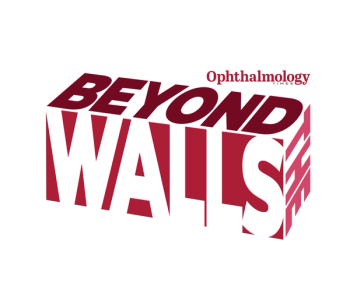
Targeting the utility of epithelial thickness mapping
Investigators examine usefulness in refractive surgery evaluations
This article was reviewed by J. Bradley Randleman, MD.
In a retrospective evaluation of 100 consecutive patients screened for refractive surgery candidacy, a team of investigators hoped to determine how adding corneal epithelial thickness maps to the process can impact patient screening.
Several corneal imaging technologies are used to evaluate patients who ask about refractive surgery. It is now possible to add epithelial mapping to the screening process. The authors routinely use a combination of Scheimpflug tomography and anterior segment optical coherence tomography (AS-OCT) in their practice, but until now had not analyzed what impact occurred with the addition of this epithelial mapping.
Analysis
For each patient, screening was performed based on Scheimpflug tomography, clinical data, and patient history. Two masked reviewers decided on eligibility for corneal refractive surgery and choice of surgery.
The reviewers were then shown the patient’s epithelial thickness maps made from the AS-OCT, and the researchers determined the percentage of screenings that changed after evaluating the epithelial thickness maps, in candidacy for surgery, surgery of choice, and ranking of surgical procedures from most favorable to least favorable.
Results
Following the evaluation of the epithelial thickness maps, candidacy for corneal refractive surgery changed in 17% of patients. Of the patients whose candidacy changed, 58.82% resulted in screening in patients and 41.18% of the changes resulted in screening out patients.
In the subset of patients that remained eligible candidates for surgery, the surgery of choice changed in 20.83% of cases after evaluating the epithelial thickness maps. The ranking of surgical procedures, from most favorable to least favorable, changed in 36.11% of cases, with 13.89% of patients losing eligibility and 11.11% gaining eligibility, for one or more surgical procedure.
In the subset of patients in which eligibility for surgery, surgery of choice, and ranking of surgical procedures from most to least favorable did not change, the epithelial thickness maps increased the reviewers’ confidence in their decision in 49.12% of cases, decreased their confidence in 17.54% of cases, and had no impact on their level of confidence in 33.33% of cases.
Conclusions
The investigators found that epithelial thickness mapping derived from OCT imaging of the cornea alters candidacy for corneal refractive surgery, as well as choice of surgery, in a substantial percentage of patients.
In addition, they found that epithelial thickness maps result in screening in a slightly larger percentage of patients who can be helped with corneal refractive surgery. Therefore, they deemed it a valuable tool for screening evaluations.
J. Bradley Randleman, MD
E: [email protected]
This article is based on Randleman’s presentation at the Association for Research in Vision and Ophthalmology 2021 Annual Meeting. Randleman has no relevant financial disclosures. This work was supported by Research to Prevent Blindness.
Newsletter
Don’t miss out—get Ophthalmology Times updates on the latest clinical advancements and expert interviews, straight to your inbox.



















































.png)


